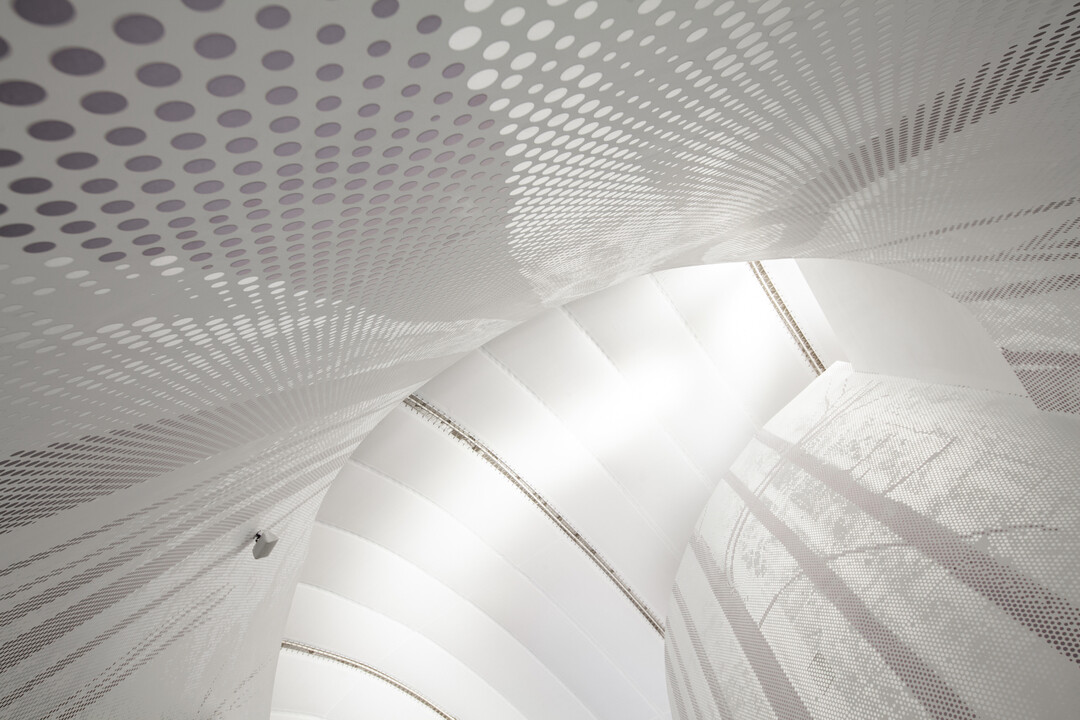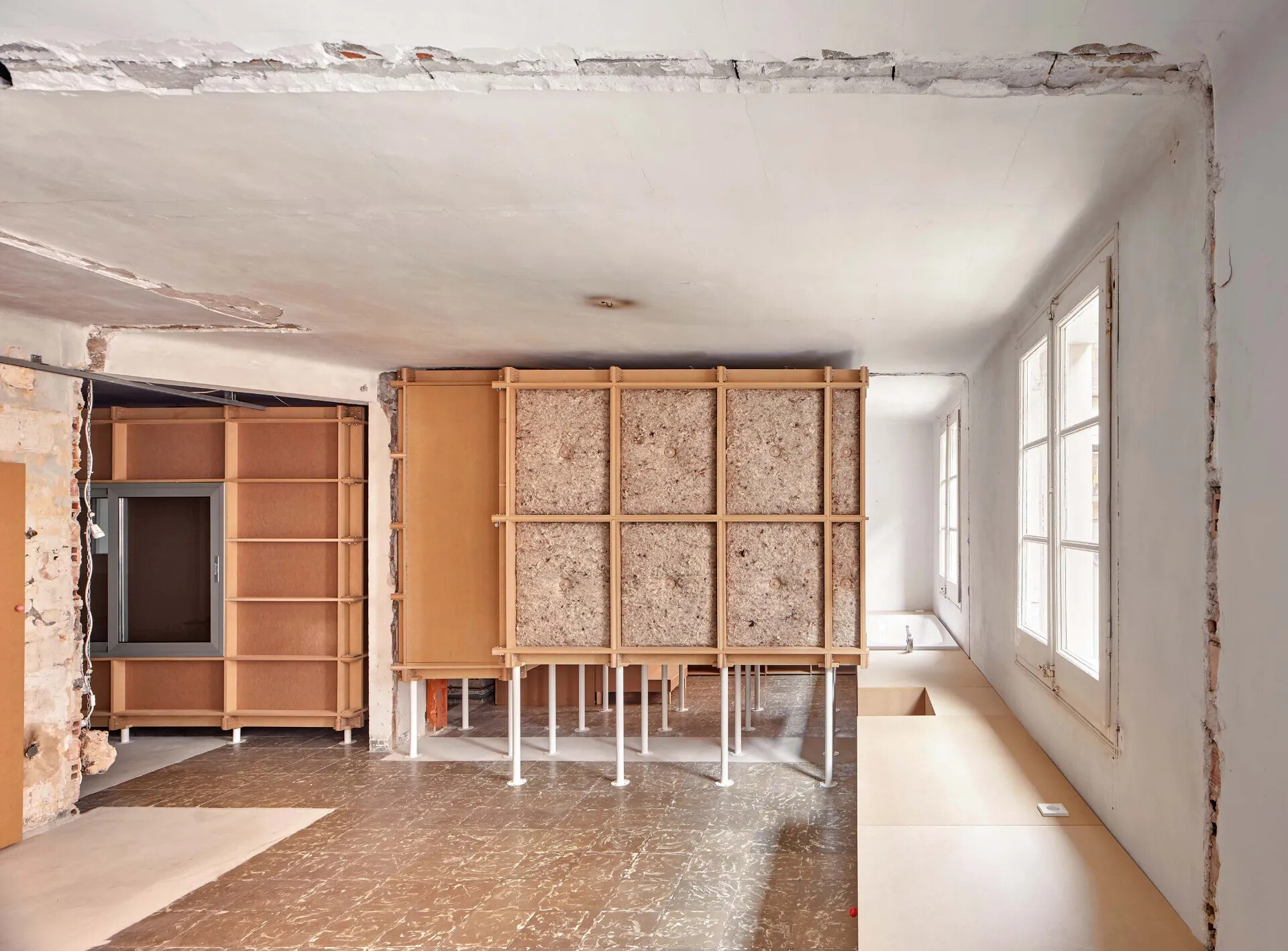
Members Only
Please join as a member and click "Members Only" to read more complete articles and exclusive content.

Please join as a member and click "Members Only" to read more complete articles and exclusive content.

位於巴塞隆納的10k House是一個50平方米的公寓翻新項目,執行預算僅1萬歐元,目標在面臨目前的能源危機及氣候變化的架構下,更新使用模式並提高環保意識。面對預算有限和實現改造這兩個極對立概念的挑戰,從平衡兩者之間的矛盾產生了推動此項目的主要決策。
選擇打破常規的房間與廊道佈局方式,採用溫度漸變方式來進行房屋功能及規劃配置。如洋蔥般的層次分明其結構,房屋的不同空間相互交織堆疊,從最冷到最熱,以充分利用自然熱度來達到節能效果,而無需消耗額外的能源。這種溫度多樣化的分佈方式,可以統一功能需求、溫度條件和效率,以達環保節能之特點。利用回收的桌腳來抬高房屋的建成部分,使水和電力設施能夠自由通行,而無需在牆壁上施工開槽,從而降低成本並節省工作時間。將材料調色板極度精簡化:選擇的材料在成本、結構和能源效率之間保持盡可能平衡的比例。這方面,主要選用的建築材料為標準的中密度纖維板和當地的天然羊毛。為了在購買新材料和施工時間上節省成本,取消了拆除後重新裝修(油漆、石膏、瓷磚等)的部分,取而代之的是對地板、牆壁和天花板進行簡單徹底的清潔,使其拆除後的痕跡保留下來,清晰可見。
浴室和廚房佈局位置擁有有趣的特點,它們佔據了房屋側邊的最佳位置,被設定即使在人多的情況也能使用的地方,光線充足且通風良好。廚房設計為無性別差異的空間,開放的配置鼓勵所有家庭成員都能平等使用,不論性別。其材質與其他部分相同,進一步的強化了整合性。此項目為自建工程,使用「乾式」施工的改造方式,以便讓「非專業人士」得以參與其中。這種改造方式類似組裝家具,將房屋的不同部分,包括牆壁、天花板和支柱等,在事先使用電腦數值控制技術(CNC),從建築工作室繪製的圖紙上進行切割。一旦達施工現場後,只需使用標準螺絲,由建築師和客戶根據說明手冊進行組裝,而無需專業的施工人員。